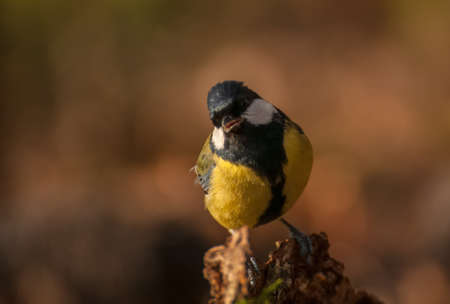Introduction to Birdwatching in Britain
Beneath the ever-changing skies of Britain, where rolling hills meet ancient woodlands and the wild Atlantic winds sweep across rugged coastlines, a quiet tradition flourishes. Birdwatching here is not merely a pastime; it is a way of connecting with the living landscape—a gentle pursuit that draws people into the heart of nature. Across village greens and moorland paths, from the tranquil banks of hidden lochs to windswept estuaries teeming with life, generations have cherished the simple thrill of spotting a flash of colour or hearing a rare birdsong. The British Isles, blessed with an astonishing diversity of habitats, are home to some of Europe’s most enchanting birdwatching trails. This deep-rooted love for observing birds in their wild homes invites both seasoned twitchers and curious newcomers alike to step outside and discover what lies beyond the hedgerows. In this guide, we’ll journey through Britain’s finest birdwatching trails—uncovering where to go, what to expect, and how each path offers its own story woven with feathered wonders and natural beauty.
Essential Birdwatching Etiquette and Tips for the British Countryside
As you set out along Britain’s beloved birdwatching trails, it’s not just about spotting a flash of kingfisher blue or hearing the soft fluting of a song thrush at dawn; it’s about weaving yourself gently into the tapestry of ancient hedgerows, wild moors, and dew-dappled meadows. The British countryside is cherished for its serenity and diversity, so respecting its rhythms and inhabitants is essential to ensuring both wildlife and fellow wanderers are left undisturbed. Here’s how to blend seamlessly with nature while enjoying your birdwatching adventure.
Respectful Behaviour in the Wild
The unwritten code of the countryside rests on consideration—for people, for wildlife, and for the land itself. Always keep to marked paths where possible to avoid disturbing nesting sites or trampling delicate flora. If you come across a gate, remember the golden rule: leave it as you found it. In quieter corners where sheep graze and hares dart through long grass, keep dogs on short leads during nesting season (usually March to July) and never approach livestock or wild animals.
Best Practices for Birdwatchers
| Do | Don’t |
|---|---|
| Carry binoculars instead of approaching birds closely | Use playback calls or disturb nests |
| Dress in muted colours to blend with surroundings | Wear bright clothing that could startle wildlife |
| Be patient and move quietly, minimising noise | Shout or play loud music on trails |
| Share sightings quietly with others nearby | Crowd around rare birds or block narrow paths |
Local Customs and Traditions
Britain’s footpaths often cross private land thanks to centuries-old “right to roam” laws, so a friendly nod or quiet “Good morning” goes a long way. It’s customary to greet fellow walkers with a smile—birdwatchers are a sociable lot, after all. If you’re lucky enough to join a local group, listen out for regional wisdom: from the best time to catch sight of barn owls at dusk to tales of elusive bitterns lurking in reedy fenlands.
Sustainable Birdwatching Essentials
- Pack out what you pack in—leave no trace of picnics or litter.
- Avoid picking wildflowers or removing natural objects.
- If you record sightings, share them with local conservation groups who use this data to monitor bird populations.
By following these simple guidelines and embracing the gentle pace of the British countryside, your birdwatching experience will be richer—not only for the species you see but for the sense of belonging you’ll feel beneath ancient oaks and sweeping skies.

3. Top Birdwatching Trails in England: From RSPB Reserves to Hidden Gems
England’s tapestry of birdwatching trails weaves through ancient woodlands, wild marshes, and tranquil estuaries, each promising its own chorus of birdsong and breathtaking encounters. Among the crown jewels is RSPB Minsmere on the Suffolk coast, a sanctuary where reedbeds ripple under the weightless flutter of bearded tits and bitterns. Here, early mornings are gilded by the haunting calls of marsh harriers gliding over shimmering lagoons, while autumn brings flocks of waders and wildfowl to the mudflats—a spectacle that stirs even the most seasoned birder.
Yet, the beauty of English birdwatching lies as much in discovery as in destination. Beyond Minsmere’s famed hides, you’ll find quieter gems like Yarner Wood in Devon, where mossy paths wind beneath oak canopies alive with pied flycatchers in spring. In the Northumberland countryside, Druridge Bay offers sweeping dunes and freshwater pools; watch for little terns nesting along sandy stretches or elusive otters weaving between reeds.
The South Downs’ rolling chalk hills cradle ancient yew forests at Kingley Vale, home to green woodpeckers and soaring red kites. Meanwhile, on the windswept Norfolk coast, Cley Marshes draws birders from near and far—its saltmarshes a haven for avocets, spoonbills, and winter skeins of brent geese. Even urban trails hold their magic: London’s Walthamstow Wetlands, a hidden oasis within sight of city spires, surprises with breeding kingfishers and swooping swifts against an unlikely skyline.
Each region reveals its secrets with the seasons—a subtle shifting of light, a new melody in the hedgerows. Whether you’re treading well-worn boardwalks or venturing down forgotten footpaths edged with wildflowers, England’s birdwatching trails invite you to pause, listen, and marvel at nature’s quiet theatre unfolding all around.
4. Wales’ Wild Wanderings: Where Valleys and Coasts Meet Feathery Wonders
There is a rare poetry to birdwatching in Wales, where emerald valleys tumble towards the sea and rugged cliffs bear silent witness to the pulse of wildness. Here, every footstep along a mossy trail seems to echo with stories of ancient woodland spirits and the timeless flight of birds overhead. Welsh trails offer not only breathtaking vistas but also a tapestry woven with local legends—each path inviting you to trace the flight lines of red kites circling above or listen for the haunting call of curlews drifting across salt marshes. Along the Pembrokeshire Coast Path, seabirds wheel and dive against dramatic cliff faces; while at Ynys-hir Reserve, lively warblers flit through alder woods and lapwings dance over wet meadows.
Notable Welsh Birdwatching Trails
| Trail Name | Habitat | Signature Birds | Local Lore |
|---|---|---|---|
| Pembrokeshire Coast Path | Cliffs & Coastal Grassland | Puffin, Chough, Guillemot | Tales of shipwrecks and ancient saints |
| Ynys-hir RSPB Reserve | Marshes & Ancient Woodland | Lapwing, Redstart, Osprey | The legend of the Red Kites return |
| Elan Valley Trail | Lakes & Heather Moorland | Red Kite, Peregrine Falcon, Dipper | Stories of poets inspired by the landscape |
What to Expect on Your Welsh Ramble
A gentle mist often clings to these landscapes in early morning, painting everything in soft hues and making each bird encounter feel almost magical. The laughter of jackdaws mingles with the distant crash of waves, while skylarks spiral upwards from bracken-clad hills. Keep an eye out for traditional stone walls draped in lichen—perfect perches for wheatears—and pause beside ancient oaks that have sheltered generations of wildlife watchers and storytellers alike.
Tips for an Authentic Welsh Birdwatching Experience:
- Wear sturdy boots; trails can be muddy after rain showers.
- Bring binoculars for cliff-top viewing—many species nest out of easy sight.
- Ask locals about their favourite hidden spots; community knowledge is treasured here.
Exploring Wales’ wild wanderings is more than simply spotting birds; it’s about immersing yourself in landscapes alive with history, folklore, and the persistent song of nature. Let your senses attune to the whispering reeds, the salt-tinged wind, and the fluttering wings that have long called these valleys and coasts home.
5. Scottish Highlands and Islands: A Realm of Rare Species
The Scottish Highlands and Islands offer a birdwatching experience steeped in wild beauty and ancient folklore. Picture yourself wandering along winding trails beside deep, mysterious lochs, the haunting call of the curlew echoing across heather-clad moorland. Here, amidst craggy peaks and windswept shores, rare species thrive—making every outing a new adventure for keen-eyed enthusiasts.
Unique Landscapes and Hidden Gems
Unlike anywhere else in Britain, the rugged grandeur of Scotland’s high country creates habitats for some of the nation’s most elusive birds. The shimmering waters of Loch Lomond or the dramatic cliffs of Skye are home to golden eagles, ptarmigans, and even white-tailed sea eagles—the ‘flying barn doors’ revered by locals. Each glen tells its own story, and every quiet moment by a peat bog or pine forest may reward you with glimpses of capercaillie or Scottish crossbill.
Cultural Touches Along the Trails
Birdwatching here is more than just a pastime; it’s woven into the fabric of Highland life. You might find yourself pausing at an ancient bothy for tea, listening to tales of selkies and legendary kings, or joining local ‘twitchers’ who share their favourite spots over a dram of whisky. Traditional Gaelic place names reveal how closely people have watched these lands for centuries—an unbroken thread between nature and community.
What Sets Scottish Trails Apart
The remoteness of many Highland and Island trails means you’ll often have vast landscapes all to yourself, save for a flock of greylag geese or a passing otter. The weather can be bracing, but that only adds to the sense of adventure—wellies and waterproofs are essential kit! The ever-changing light transforms mountains and lochs from one moment to the next, making each visit truly unique.
For those willing to journey north, Scotland’s birdwatching trails promise more than sightings—they offer immersion in untamed nature and timeless tradition. It’s not just about ticking species off a list; it’s about feeling part of a wilder Britain, where every hill has its own song.
6. Seasonal Highlights: When and What to Expect
Every corner of Britain offers its own spectacle as the seasons turn, each month painting the landscape with fresh colours and echoing with distinct birdsong. Spring is a time of awakening, when hedgerows and wetlands alike come alive with the flutter and flash of returning migrants. In Norfolk’s reed beds, listen for the liquid trill of warblers newly arrived from Africa, while at Yorkshire’s coastal cliffs, gannets and puffins begin their busy nesting routines. The air is sweet with blossom, and every dawn chorus feels laden with promise.
Summer brings quieter moments, perfect for slow rambles along the leafy lanes of Sussex or beneath the ancient oaks of Sherwood Forest. While many birds are quietly raising chicks, you might catch glimpses of darting kingfishers or hear the soft coo of woodpigeons in the shade. Look skyward for soaring kites above Welsh hills or catch the shimmer of swallows skimming over meadows heavy with wildflowers.
As autumn arrives, a thrilling energy surges through Britain’s birdlife. The east coast becomes a theatre for migration: flocks of redwings and fieldfares sweep in from Scandinavia, filling berry-laden hedges. In Somerset’s wetlands, thousands of starlings gather at dusk to perform swirling murmurations—a true natural ballet against brooding skies. Coastal estuaries bustle with waders refuelling on their long journeys south, their calls ringing out across tidal flats.
Winter transforms Britain’s reserves into havens for hardy visitors. Marshes in Lancashire welcome vast flocks of pink-footed geese and whooper swans from Iceland, their honks and bugling cries carrying across frozen fields. Frost-glazed mornings are perfect for spotting siskins and bramblings among beech woods, while in the Scottish Highlands, golden eagles ride icy winds above snow-dusted peaks.
Timing Your Visit
For spring spectacles, March to May rewards early risers with vibrant song and courtship displays—ideal for RSPB Minsmere or Rutland Water. The height of summer (June to August) offers peaceful observation at woodland trails or highland glens. From September to November, head to coastal hotspots like Spurn Point or WWT Slimbridge for migration marvels. Winter’s crisp days (December to February) are best spent at wetland reserves such as Martin Mere or Caerlaverock, where gatherings of wildfowl create unforgettable scenes.
Each season tells its own story along Britain’s birdwatching trails—one written in flight paths across vast skies, whispered through reeds at dawn, and sung by robins in frost-tipped gardens. Whenever you choose to visit, nature’s drama awaits.
7. Preparing for a Memorable Birdwatching Adventure
Setting out on one of Britain’s finest birdwatching trails is as much about preparation as it is about serendipity. To make the most of your time amidst ancient woodlands, sweeping moors, or tranquil estuaries, a little planning goes a long way.
Packing Essentials for Every Explorer
Britain’s landscapes are as varied as its weather, so packing thoughtfully is key. Waterproofs and sturdy walking boots are absolute musts—even in summer, showers can arrive on a whim. Bring layers to adapt to shifting temperatures, and don’t forget a wide-brimmed hat for those rare sun-drenched days. Binoculars and a reliable field guide will help you distinguish between a chattering chiffchaff and a willow warbler. A small flask of tea and some oatcakes tucked into your rucksack can provide comfort during quiet moments spent watching the reeds sway.
Joining Local Birding Groups
There’s something uniquely enriching about sharing sightings with fellow enthusiasts. Many reserves and villages host local birdwatching groups that welcome visitors—joining one can offer insider tips and a sense of camaraderie. Whether it’s an organised dawn chorus walk or an impromptu chat at a hide, these connections often lead to deeper discoveries and new friendships.
Embracing Britain’s Ever-Changing Weather
No British adventure would be complete without embracing the unpredictability of the skies. Misty mornings give way to golden shafts of sunlight; sudden drizzles might reveal rainbows arching over wildflower meadows. Let the weather become part of the story you’ll tell—each squall, gust, or sunbeam adding texture to your day. With every step along these storied trails, remember: patience, adaptability, and curiosity are your best companions for a truly memorable birdwatching journey across Britain’s beautiful wild places.


